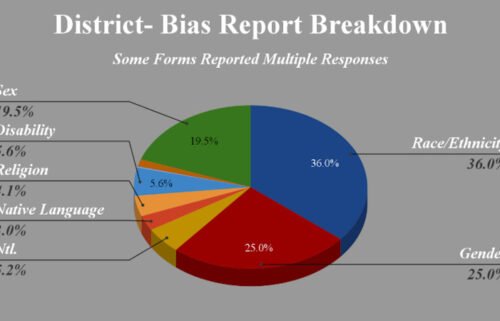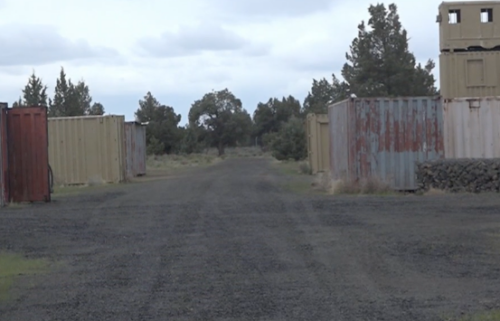More wolves, beavers needed to improve West’s habitats, OSU scientists say

CORVALLIS, Ore. (KTVZ) – Oregon State University scientists are proposing management changes on western federal lands that they say would result in more wolves and beavers and would re-establish ecological processes.
In a paper published Tuesday in BioScience, “Rewilding the American West,” co-lead author William Ripple and 19 other authors suggest using portions of federal lands in 11 states to establish a network based on potential habitat for the gray wolf – an apex predator able to trigger powerful, widespread ecological effects.
In those states, the authors identified areas, each at least 5,000 square kilometers, of contiguous, federally managed lands containing prime wolf habitat. The states in the proposed Western Rewilding Network, which would cover nearly 500,000 square kilometers, are Oregon, Washington, California, Nevada, Idaho, Montana, Wyoming, Colorado, Arizona, New Mexico and Utah.
“It’s an ambitious idea, but the American West is going through an unprecedented period of converging crises, including extended drought and water scarcity, extreme heat waves, massive fires and loss of biodiversity,” said Ripple, distinguished professor of ecology in the OSU College of Forestry.
Gray wolves were hunted to near extinction in the West, but were reintroduced to parts of the northern Rocky Mountains and the Southwest starting in the 1990s through measures made possible by the Endangered Species Act.
“Still, the gray wolf’s current range in those 11 states is only about 14% of its historical range,” said co-lead author Christopher Wolf, a postdoctoral scholar in the College of Forestry. “They probably once numbered in the tens of thousands, but today there might only be 3,500 wolves across the entire West.”
Beaver populations, once robust across the West, declined roughly 90% after settler colonialism and are now non-existent in many streams, meaning ecosystem services are going unprovided, the authors say.
By felling trees and shrubs and constructing dams, beavers enrich fish habitat, increase water and sediment retention, maintain water flows during drought, improve water quality, increase carbon sequestration and generally improve habitat for riparian plant and animal species.
“Beaver restoration is a cost-effective way to repair degraded riparian areas,” said co-author Robert Beschta, professor emeritus in the OSU College of Forestry. “Riparian areas occupy less than 2% of the land in the West but provide habitat for up to 70% of wildlife species.”
Similarly, wolf restoration offers significant ecological benefits by helping to naturally control native ungulates such as elk, according to the authors. They say wolves facilitate regrowth of vegetation species such as aspen, which supports diverse plant and animal communities and is declining in the West.
The paper includes a catalogue of 92 threatened and endangered plant and animal species that have at least 10% of their ranges within the proposed Western Rewilding Network; for each species, threats from human activity were analyzed.
The authors determined the most common threat was livestock grazing, which they say can cause stream and wetland degradation, affect fire regimes and make it harder for woody species, especially willow, to regenerate.
Nationally, about 2% of meat production results from federal grazing permits, the paper notes.
“We suggest the removal of grazing on federal allotments from approximately 285,000 square kilometers within the rewilding network, representing 29% of the total 985,000 square kilometers of federal lands in the 11 western states that are annually grazed,” Beschta said. “That means we need an economically and socially just federal compensation program for those who give up their grazing permits. Rewilding will be most effective when participation concerns for all stakeholders are considered, including Indigenous people and their governments.”
In addition to Beschta, Wolf and Ripple, authors from Oregon State include J. Boone Kauffman, Beverly Law and Michael Paul Nelson. Daniel Ashe, former director of the U.S. Fish and Wildlife Service and now the president of the Association of Zoos and Aquariums, is also a co-author.
The paper also included authors from the University of Washington, the University of Colorado, the Ohio State University, Virginia Tech, Michigan Technological University, the University of Victoria, the Turner Endangered Species Fund, the National Parks and Conservation Association, RESOLVE, the Florida Institute for Conservation Science, Public Lands Media and Wild Heritage.



